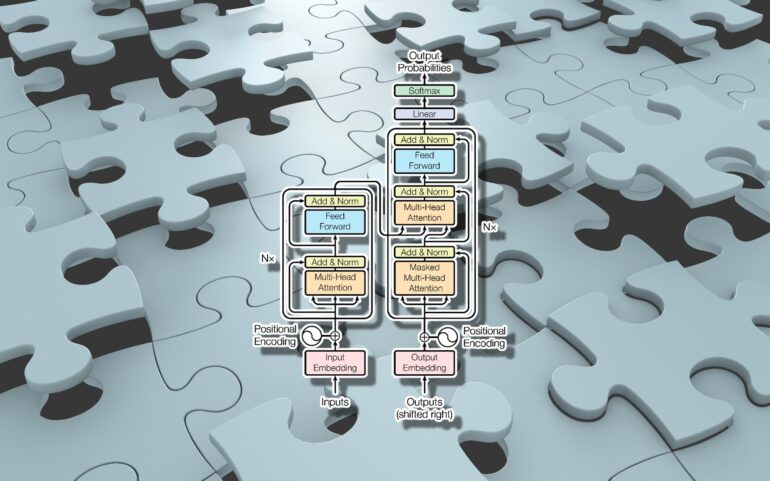TL;DR:
- OpenAI’s AI models, like GPT-4 and Google’s Bard, are becoming less transparent, raising concerns about their inner workings and data sources.
- The advent of open-source LLMs has broken down barriers to entry, providing accessible alternatives to proprietary AIs.
- Meta’s release of LLAMA kickstarted the open-source LLM movement, leading to the development of lightweight models like Alpaca 7b.
- Blogs, GitHub developers, and Hugging Face’s Open LLM Leaderboard highlight and rank open-source LLMs, fostering collaboration and exploration.
- Falcon-40B-Instruct by the UAE’s Technology Innovation Institute, currently leads the open-source LLM field.
- Open-source LLMs allow researchers to understand and improve model performance while democratizing access to powerful AI tools.
- The transparency of open-source LLMs helps identify and address flaws in safety measures and controls.
- The success of small open-source LLMs demonstrates that powerful chatbots can be created with fewer parameters, resources, and data.
- Open-source LLMs level the playing field, enabling more players, including academia, to contribute to AI development and mitigation strategies.
- Open-source LLMs democratize AI by reducing the costs and computational resources required for effective models.
Main AI News:
In today’s business landscape, the realm of artificial intelligence (AI) is dominated by colossal entities like OpenAI and Google, with their powerful and renowned large language models (LLMs) such as GPT-4 and Bard. However, the once-transparent nature of these models is becoming increasingly opaque, raising concerns about their inner workings and data sources. TechTalks’ Ben Dickson highlights that OpenAI, in particular, no longer divulges details about its training data and model architecture, leaving the public in the dark regarding GPT-4’s specifics.
This lack of transparency, coupled with the immense computational resources required to develop and operate models with undisclosed parameters, created a future that seemed destined to be monopolized by proprietary AIs. The barriers to entry were high, with prohibitive costs and limited accessibility. But a remarkable shift is occurring, spearheaded by a new wave of open-source LLMs that are breaking down those barriers. Interestingly, it was the tech juggernaut Meta that jump-started this movement with its release of LLAMA, a groundbreaking model that served as a foundation for subsequent advancements in the field.
Through iterative development and collaborative efforts, researchers have paved the way for other open-source LLMs, such as the lightweight Alpaca 7b, capable of running efficiently on personal equipment. These advancements have been bolstered by various blogs, GitHub developers, and Hugging Face—a prominent machine-learning developer—which now actively disseminate, showcase, and rank lists of open-source LLMs. Consequently, these resources have become accessible not only to researchers but also to hobbyists and individuals eager to explore the realm of AI.
Hugging Face’s Open LLM Leaderboard, for instance, evaluates open-source LLMs across four distinct benchmarks. These benchmarks test the models’ reasoning capabilities, ability to infer commonsense information, multitasking proficiency, and tendency to repeat false information commonly found online. Currently leading the pack is Falcon-40B-Instruct, a model developed by the UAE’s Technology Innovation Institute.
The proliferation of open-source LLMs has prompted an explosion of interest and activity in the field. Stella Biderman, head of research at Eleuther AI, the organization responsible for creating the benchmarks utilized by Hugging Face, believes that open-source models are essential for academic and economic reasons. By offering alternatives to dominant industry behemoths, these models level the playing field and foster healthy competition.
Furthermore, open-source LLMs provide an invaluable opportunity for researchers to delve into the intricate workings of these models, uncovering insights into why they sometimes produce false, peculiar, or toxic responses. Ellie Pavlick, a computer science professor at Brown University and a Google AI employee, emphasizes the significance of this transparency. It enables the involvement of more red-teamers and jailbreakers, who push the boundaries of these systems and uncover flaws in their safety protocols and controls. With countless eyes scrutinizing these models, innovative mitigation strategies can be developed, ultimately enhancing their effectiveness.
Moreover, the availability of open-source LLMs democratizes access to these potent tools, empowering programmers and researchers who may have limited capital and computational resources. Over time, open-source developers have successfully reduced the financial and computational requirements for developing and deploying effective LLMs. TechTalks’ Ben Dickson asserts that even a chatbot with “only” a few billion parameters can be immensely powerful when trained on a substantial dataset. These models can also be fine-tuned with fewer data and resources than initially anticipated, and they can be deployed on local devices such as laptops and smartphones, bypassing the need for high-end servers.
Conclusion:
The rise of open-source LLMs represents a significant challenge to the dominance of tech giants in the AI market. These open-source models, driven by collaboration and transparency, offer alternatives that are accessible, cost-effective, and foster innovation. They empower researchers, democratize access to AI tools, and promote a deeper understanding of AI models. This shift disrupts the market by enabling a more diverse range of players to participate and contribute to AI development, ultimately fostering healthy competition and spurring advancements in the field.

